 Search by Keyword
Sign Up Below for our MONTHLY BEATLES TRIVIA QUIZ!
|
"YOU LIKE ME TOO MUCH"
(George Harrison)
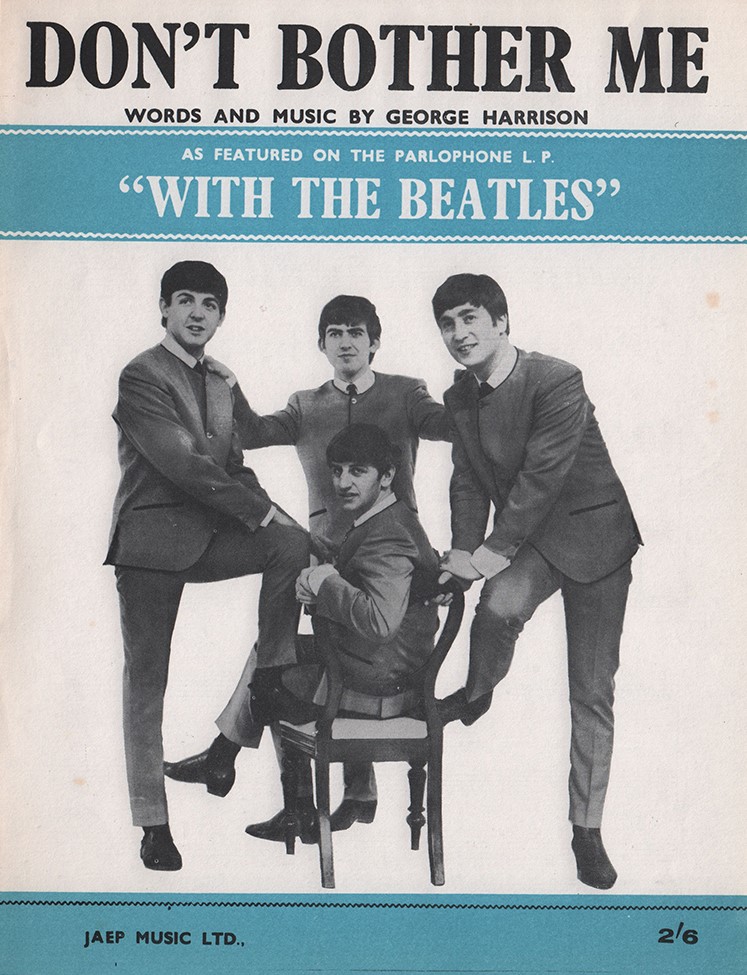 America got its second taste of George Harrison's songwriting ability with this track from the Capitol album "Beatles VI." This is not to say that this was the second song he ever wrote. His first attempt at songwriting resulted in "Don't Bother Me," which landed on the multi-million selling US album "Meet The Beatles!," but his second attempt got only as far as a demo recorded on June 3rd, 1964, entitled "You Know What To Do." (This demo was eventually released on "Anthology 1.") George then introduced a newer composition to the group during the first recording session for the album "Help!" entitled "I Need You." It was two days later, once that song was completed in the studio, that George brought "You Like Me Too Much" into EMI Studio Two to record with The Beatles. America got its second taste of George Harrison's songwriting ability with this track from the Capitol album "Beatles VI." This is not to say that this was the second song he ever wrote. His first attempt at songwriting resulted in "Don't Bother Me," which landed on the multi-million selling US album "Meet The Beatles!," but his second attempt got only as far as a demo recorded on June 3rd, 1964, entitled "You Know What To Do." (This demo was eventually released on "Anthology 1.") George then introduced a newer composition to the group during the first recording session for the album "Help!" entitled "I Need You." It was two days later, once that song was completed in the studio, that George brought "You Like Me Too Much" into EMI Studio Two to record with The Beatles.
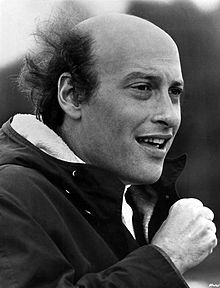 Both "I Need You" and "You Like Me Too Much" were offered for inclusion in their second motion picture, but director Richard Lester chose only one, which was "I Need You." That being the case, "You Like Me Too Much" was left on the back burner with the intention of including it on side two of the British soundtrack album. Before that happened, though, Capitol Records in the US wanted more songs to fill a proposed album they were planning on releasing that they eventually called "Beatles VI." Since EMI knew "You Like Me Too Much" wouldn't be in the film, they sent copies of both the stereo and mono mixes of the song to Capitol. Therefore, American audiences were privileged to be the first to hear this rollicking George Harrison composition. Both "I Need You" and "You Like Me Too Much" were offered for inclusion in their second motion picture, but director Richard Lester chose only one, which was "I Need You." That being the case, "You Like Me Too Much" was left on the back burner with the intention of including it on side two of the British soundtrack album. Before that happened, though, Capitol Records in the US wanted more songs to fill a proposed album they were planning on releasing that they eventually called "Beatles VI." Since EMI knew "You Like Me Too Much" wouldn't be in the film, they sent copies of both the stereo and mono mixes of the song to Capitol. Therefore, American audiences were privileged to be the first to hear this rollicking George Harrison composition.
Songwriting History
George's 1979 book "I Me Mine" turned out to be a very informative account of his songwriting throughout the years. Unfortunately, he decided not to discuss the song "You Like Me Too Much" at all, presumably because he felt there wasn't much to say (or he just couldn't remember).
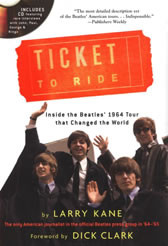 He has talked about his struggles as a songwriter in interviews in 1965. In an interview by journalist Larry Kane in August of that year, as taken from his book "Ticket To Ride," George was asked about his songwriting plans for the future. "Well, I am still trying to turn out a couple," he answered. "My main problem is trying to write lyrics...I have written a few more songs I've got taped at home, but if I get something going, then I'll tape it. I'll leave it for about five weeks, then I'll suddenly remember. Then I'll add a bit more to it, and so it will probably take me about three months before I finish one song. I'm so lazy it's ridiculous, but I'd like to write more." He has talked about his struggles as a songwriter in interviews in 1965. In an interview by journalist Larry Kane in August of that year, as taken from his book "Ticket To Ride," George was asked about his songwriting plans for the future. "Well, I am still trying to turn out a couple," he answered. "My main problem is trying to write lyrics...I have written a few more songs I've got taped at home, but if I get something going, then I'll tape it. I'll leave it for about five weeks, then I'll suddenly remember. Then I'll add a bit more to it, and so it will probably take me about three months before I finish one song. I'm so lazy it's ridiculous, but I'd like to write more."
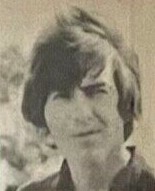 With this insight, we can at least speculate that "You Like Me Too Much" took a while to write. Given that George may very well have been exaggerating a little, we can pinpoint the song being as written through January and February of 1965, since the recording date was February 17th of that year. With this insight, we can at least speculate that "You Like Me Too Much" took a while to write. Given that George may very well have been exaggerating a little, we can pinpoint the song being as written through January and February of 1965, since the recording date was February 17th of that year.
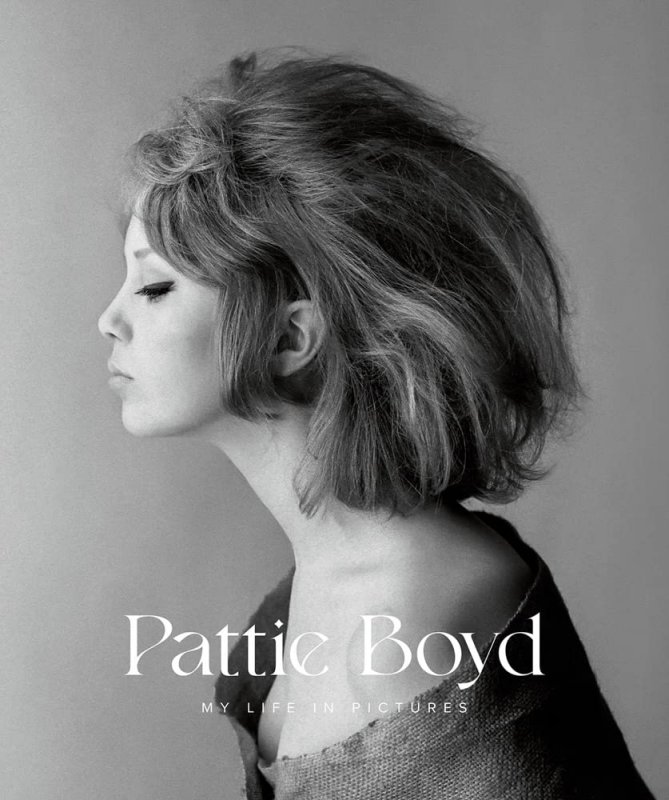 It has also been speculated that the song concerns his recent romance with model/actress Pattie Boyd, whom he was to marry on January 21st, 1966. Because of The Beatles well-documented forays into womanizing, especially during their first American tour in the fall of 1964 (refer again to Larry Kane's book "Ticket To Ride"), the lyrics to this song could very well depict some relationship problems they were experiencing. Lyrics like "I'd admit that I was wrong" and saying that her leaving "is all that I deserve" add considerable weight to the theory that his courtship with Patti was what he was writing about. It has also been speculated that the song concerns his recent romance with model/actress Pattie Boyd, whom he was to marry on January 21st, 1966. Because of The Beatles well-documented forays into womanizing, especially during their first American tour in the fall of 1964 (refer again to Larry Kane's book "Ticket To Ride"), the lyrics to this song could very well depict some relationship problems they were experiencing. Lyrics like "I'd admit that I was wrong" and saying that her leaving "is all that I deserve" add considerable weight to the theory that his courtship with Patti was what he was writing about.
Recording History
 February 17th, 1965 was the date of the third recording session in EMI Studio Two for what would become the album "Help!," although it didn't have that name as of yet. While a nine hour session on October 18th, 1964 resulted in eight songs being completed, this nine hour session (from 2 to 11pm) only resulted in two. The first five hours were used to record Lennon and McCartney's song "The Night Before," while the final four hours (7 to 11pm) were utilized for George Harrison's "You Like Me Too Much." February 17th, 1965 was the date of the third recording session in EMI Studio Two for what would become the album "Help!," although it didn't have that name as of yet. While a nine hour session on October 18th, 1964 resulted in eight songs being completed, this nine hour session (from 2 to 11pm) only resulted in two. The first five hours were used to record Lennon and McCartney's song "The Night Before," while the final four hours (7 to 11pm) were utilized for George Harrison's "You Like Me Too Much."
 Eight takes were required to complete the song, "take eight" being deemed the best. Multiple overdubs, however, were considered necessary. George Martin's handwritten notes indicate that the rhythm track was recorded onto track one of the four-track tape. Interestingly, one element of the rhythm track was Paul on piano during the introduction of the song only, then switching to bass guitar for the remainder of the song. The rest of the rhythm track consisted of George on his Gibson acoustic guitar, Ringo on drums and John on tambourine. George's lead vocal was then overdubbed onto track two of the tape. Eight takes were required to complete the song, "take eight" being deemed the best. Multiple overdubs, however, were considered necessary. George Martin's handwritten notes indicate that the rhythm track was recorded onto track one of the four-track tape. Interestingly, one element of the rhythm track was Paul on piano during the introduction of the song only, then switching to bass guitar for the remainder of the song. The rest of the rhythm track consisted of George on his Gibson acoustic guitar, Ringo on drums and John on tambourine. George's lead vocal was then overdubbed onto track two of the tape.
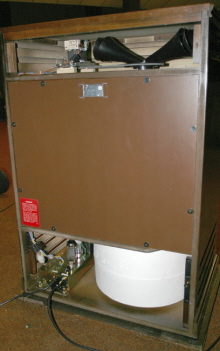 Track three of the tape included some rather interesting overdubs. First off, John was apparently in the mood to play a Hohner electric piano (or Pianet) on that day because he played one both on "The Night Before" and "You Like Me Too Much," his performance on track three of this song ending up quite loud in the mix. This electric piano was played with a touch of reverb and a tremolo effect in the introduction which added a degree of modulated hiss in the first eight seconds of the song, ending with an audible "click" when the tremolo effect was turned off. Also, for the solo section of the song, George played lead guitar passages while Paul with George Martin, both playing the same Steinway piano at the same time, answered George Harrison's guitar phrases. This piano was run through a Hammond B-3's rotating Leslie speaker, which was an effect they used quite often later in their career for vocals and lead guitar (among other things). Track three of the tape included some rather interesting overdubs. First off, John was apparently in the mood to play a Hohner electric piano (or Pianet) on that day because he played one both on "The Night Before" and "You Like Me Too Much," his performance on track three of this song ending up quite loud in the mix. This electric piano was played with a touch of reverb and a tremolo effect in the introduction which added a degree of modulated hiss in the first eight seconds of the song, ending with an audible "click" when the tremolo effect was turned off. Also, for the solo section of the song, George played lead guitar passages while Paul with George Martin, both playing the same Steinway piano at the same time, answered George Harrison's guitar phrases. This piano was run through a Hammond B-3's rotating Leslie speaker, which was an effect they used quite often later in their career for vocals and lead guitar (among other things).
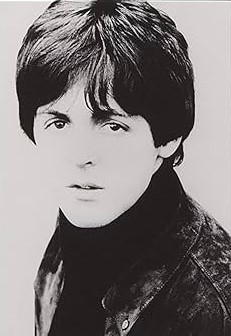 Onto track four Harrison double-tracked his lead vocals while John and Paul added harmonies, Paul's lower harmony being heard whenever the title is sung as well as during the bridge. This completed the song, the session being over by 11 pm that evening. Onto track four Harrison double-tracked his lead vocals while John and Paul added harmonies, Paul's lower harmony being heard whenever the title is sung as well as during the bridge. This completed the song, the session being over by 11 pm that evening.
Although the song didn't end up being used in the movie, it definitely was a contender this early on. Therefore, a mono mix was made the next day (February 18th) along with the songs that did end up in the film. This mix was done in the control room of Studio Two by producer George Martin and engineers Norman Smith and Ken Scott.
 The original stereo mix of the song as heard on all releases in the '60s was performed on February 23rd, 1965 in the EMI Studio Two control room. The non-importance of stereo mixes can be seen by the fact that producer George Martin wasn't present when this stereo mixing session transpired. He left these mixes to be completed under the supervision of engineer Norman Smith with Malcolm Davies as second engineer on that day. The original stereo mix of the song as heard on all releases in the '60s was performed on February 23rd, 1965 in the EMI Studio Two control room. The non-importance of stereo mixes can be seen by the fact that producer George Martin wasn't present when this stereo mixing session transpired. He left these mixes to be completed under the supervision of engineer Norman Smith with Malcolm Davies as second engineer on that day.
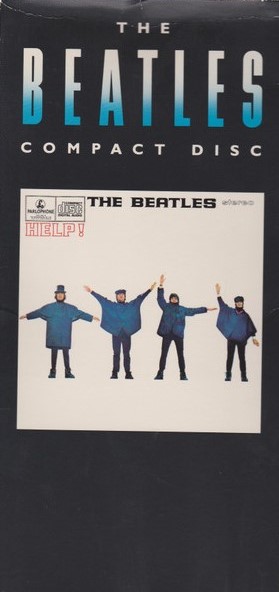 When all of the British Beatles albums were being issued on compact disc in the '80s, it was decided that the album "Help!" would be available in stereo, unlike the first four albums that appeared on CD only in mono. Possibly because George Martin wasn't even present when some of the original stereo mixes were made in the '60s, he insisted on creating new ones. Therefore, sometime in 1986, George Martin went back to the original master tapes to re-create stereo mixes for the entire "Help!" album, including "You Like Me Too Much." These new mixes were also utilized when the album was remastered for the 2009 compact disc release. When all of the British Beatles albums were being issued on compact disc in the '80s, it was decided that the album "Help!" would be available in stereo, unlike the first four albums that appeared on CD only in mono. Possibly because George Martin wasn't even present when some of the original stereo mixes were made in the '60s, he insisted on creating new ones. Therefore, sometime in 1986, George Martin went back to the original master tapes to re-create stereo mixes for the entire "Help!" album, including "You Like Me Too Much." These new mixes were also utilized when the album was remastered for the 2009 compact disc release.
Song Structure and Style
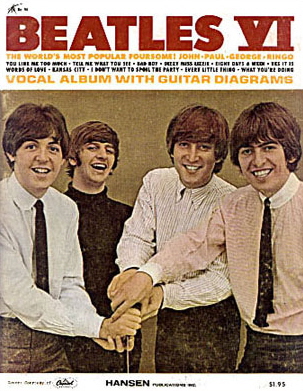 George follows the well established pattern of Lennon and McCartney by creating this song with the usual 'verse/ verse/ bridge/ verse' pattern and a good number of surprises along the way. An introduction and conclusion (which are virtually identical) and an instrumental section round out the arrangement, making it an aabacba format. George follows the well established pattern of Lennon and McCartney by creating this song with the usual 'verse/ verse/ bridge/ verse' pattern and a good number of surprises along the way. An introduction and conclusion (which are virtually identical) and an instrumental section round out the arrangement, making it an aabacba format.
The piano/keyboard introduction appears to be slow and without tempo but in actuality, when compared to the nearly identical conclusion, it pretty much stays in the 4/4 pattern and is six measures long. The illusion appears because no percussive backdrop keeps the beat for us, while the rhythm section in the conclusion keeps our feet tapping out the pattern to the identically played keyboard phrase at the end of the song.
 The last two beats of the introduction premier George's vocals, which take us directly into the first sixteen-measure verse. The whole band kicks in on the one-beat of the first measure, although in this case the band consists of Ringo on drums, Paul on bass and George on double-tracked lead vocals, while John is heard on electric piano (overdubbed). George's double-tracked vocals are heard throughout the verse until they are joined by Paul's lower harmony in the final two measures on the key phrase "'cause you like me too much and I like you." The last two beats of the introduction premier George's vocals, which take us directly into the first sixteen-measure verse. The whole band kicks in on the one-beat of the first measure, although in this case the band consists of Ringo on drums, Paul on bass and George on double-tracked lead vocals, while John is heard on electric piano (overdubbed). George's double-tracked vocals are heard throughout the verse until they are joined by Paul's lower harmony in the final two measures on the key phrase "'cause you like me too much and I like you."
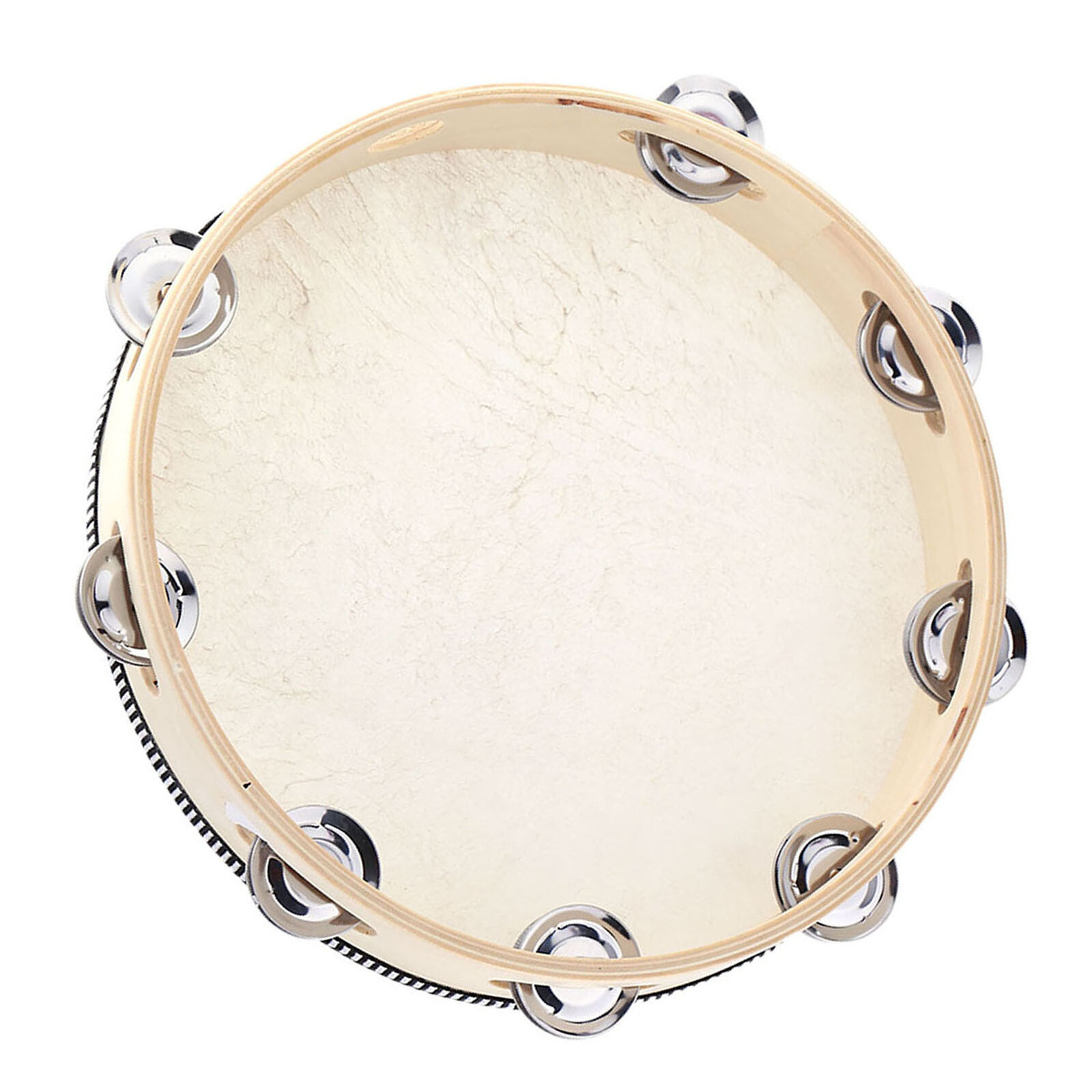 The second verse follows the same exact format, but this time ends with a swinging drum fill from Ringo to introduce the bridge. The eight-measure bridge premiers John's tambourine from the rhythm track for the first time as well as continuing the harmonized vocals of George and Paul. The second verse follows the same exact format, but this time ends with a swinging drum fill from Ringo to introduce the bridge. The eight-measure bridge premiers John's tambourine from the rhythm track for the first time as well as continuing the harmonized vocals of George and Paul.
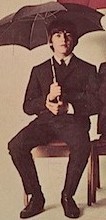 Interestingly, the lyrics that begin the bridge are actually a continuing thought from the previous verse, which masks this as the beginning of the next section of the song. The first line of the bridge is "I really do," which extends from the line just heard at the end of the second verse, that being "and I like you." George does the same trick with the closing lyrics of the bridge, which end with "if you leave me..." The third verse then continues the sentence "...I will follow you." George may be a somewhat new songwriter, but this clever trick could serve as a lesson for his more experienced band mates. Very impressive. Interestingly, the lyrics that begin the bridge are actually a continuing thought from the previous verse, which masks this as the beginning of the next section of the song. The first line of the bridge is "I really do," which extends from the line just heard at the end of the second verse, that being "and I like you." George does the same trick with the closing lyrics of the bridge, which end with "if you leave me..." The third verse then continues the sentence "...I will follow you." George may be a somewhat new songwriter, but this clever trick could serve as a lesson for his more experienced band mates. Very impressive.
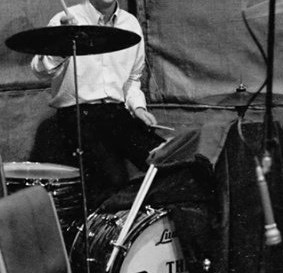 The beginning of the third verse shows the tambourine disappearing as we fall back into the same arrangement as the preceding verses. This verse ends with another similar drum break to herald in the instrumental section of the song. This instrumental section, like the verses, is sixteen-measures long, but deceptively appears to be following the traditional 12-bar blues pattern unlike anything in the song thus far. Paul then adds harmony to the song's key phrase at the end to fool us a little. The beginning of the third verse shows the tambourine disappearing as we fall back into the same arrangement as the preceding verses. This verse ends with another similar drum break to herald in the instrumental section of the song. This instrumental section, like the verses, is sixteen-measures long, but deceptively appears to be following the traditional 12-bar blues pattern unlike anything in the song thus far. Paul then adds harmony to the song's key phrase at the end to fool us a little.
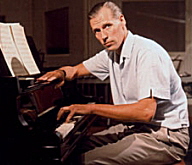 This section is also unique because of the type of solo heard. Being The Beatles' lead guitarist, one would think George would crank out a pre-arranged guitar solo (as he had done on "Don't Bother Me"). But instead, we hear an interesting interplay between his lead guitar phrases and Paul and George Martin's piano phrases. If George gives a descending guitar phrase (as he starts out with) then the piano plays an ascending phrase. If George ascends, the piano then descends. This playfully continues through the first twelve of the sixteen measure section until George and Paul's harmonies kick in at the end. Also very impressive. This section is also unique because of the type of solo heard. Being The Beatles' lead guitarist, one would think George would crank out a pre-arranged guitar solo (as he had done on "Don't Bother Me"). But instead, we hear an interesting interplay between his lead guitar phrases and Paul and George Martin's piano phrases. If George gives a descending guitar phrase (as he starts out with) then the piano plays an ascending phrase. If George ascends, the piano then descends. This playfully continues through the first twelve of the sixteen measure section until George and Paul's harmonies kick in at the end. Also very impressive.
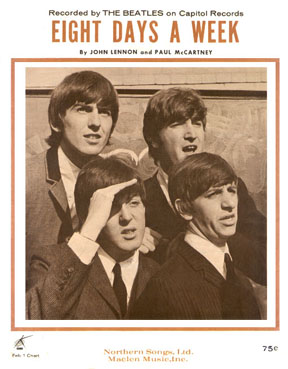 After an identical repeat of the bridge, the third verse is repeated as well, but with an added repeat of the key phrase to make sure we have the title of the song drilled into our heads. This is a trick learned from previous Beatles tracks, such as the recently recorded "Eight Days A Week" which repeats the phrase not twice, but three times at the end to make the final impression. After an identical repeat of the bridge, the third verse is repeated as well, but with an added repeat of the key phrase to make sure we have the title of the song drilled into our heads. This is a trick learned from previous Beatles tracks, such as the recently recorded "Eight Days A Week" which repeats the phrase not twice, but three times at the end to make the final impression.
We then hear the conclusion of the song, which is nearly identical to the introduction but with the full band arrangement in the background and a full ending. This bookend effect rounds out the proceedings to make the song symmetrical, also not unlike "Eight Days A Week" before it.
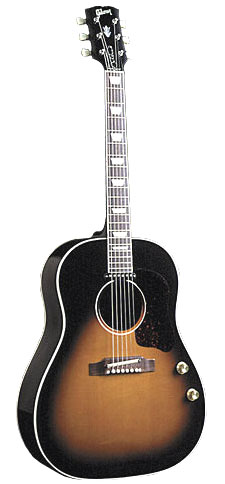 George puts in a well-rounded instrumental contribution, playing both the acoustic rhythm guitar and the lead guitar solo, thereby playing all guitars heard in the song. One has to acknowledge his fine vocal work as well. Although the note-range he had written into the song doesn't extend past six notes (from G to E above it), he handles it with skill. George puts in a well-rounded instrumental contribution, playing both the acoustic rhythm guitar and the lead guitar solo, thereby playing all guitars heard in the song. One has to acknowledge his fine vocal work as well. Although the note-range he had written into the song doesn't extend past six notes (from G to E above it), he handles it with skill.
Although it has been said that Lennon appeared disinterested whenever a "Harrisong" was being recorded (sometimes not even turning up that day), this occasion shows John very cooperative. His electric piano overdub turns out to be the driving force of the song. His semi-syncopated rhythm (usually falling on the one and two-and beat of the measure) is quite loud in the mix, while his sporadic touches of sixths and sevenths in his chords adds a somewhat jazzy flavor to the song. His tambourine playing on the rhythm track also shows that he is no slouch when it comes to percussive work.
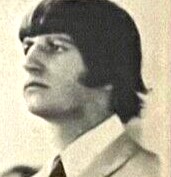 Paul's bass work suitably spices up the arrangement, although it is not as much of a focal point as it will be on later recordings. His barrelhouse piano duets with George Martin, while bordering on cliché, are excellently performed. Ringo also turns in his usual perfectionist performance on drums. All in all, the arrangement is very orchestrated and tightly woven. Harrison definitely couldn't say that they rushed through this song just to get it over with. Paul's bass work suitably spices up the arrangement, although it is not as much of a focal point as it will be on later recordings. His barrelhouse piano duets with George Martin, while bordering on cliché, are excellently performed. Ringo also turns in his usual perfectionist performance on drums. All in all, the arrangement is very orchestrated and tightly woven. Harrison definitely couldn't say that they rushed through this song just to get it over with.
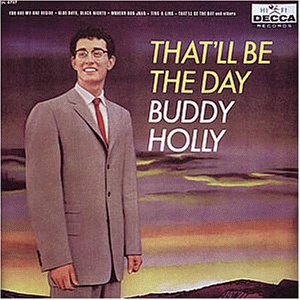 Lyrically, the song portrays George as being a little egocentric, but it's probably a very honest depiction of his life experience at the time. The subject matter is reminiscent of Buddy Holly's "That'll Be The Day," expressing that he's confident that his girl will never leave him even though she keeps threatening to. "You've tried before to leave me," George sings, "but you haven't got the nerve to walk out." Buddy Holly's confidence, as heard in his line "you say you're going to leave, you know it's a lie," is mimicked by George in the line "you'll never leave me, and you know it's true." The reason: "'cause you like me too much." Lyrically, the song portrays George as being a little egocentric, but it's probably a very honest depiction of his life experience at the time. The subject matter is reminiscent of Buddy Holly's "That'll Be The Day," expressing that he's confident that his girl will never leave him even though she keeps threatening to. "You've tried before to leave me," George sings, "but you haven't got the nerve to walk out." Buddy Holly's confidence, as heard in his line "you say you're going to leave, you know it's a lie," is mimicked by George in the line "you'll never leave me, and you know it's true." The reason: "'cause you like me too much."
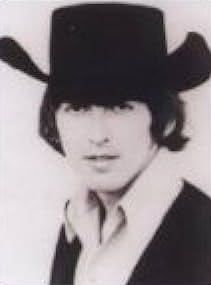 His honest arrogance wanes during the bridge and final verse, where he apparently bows to the pressures of writing a standard pop song. "If you leave me, I will follow you and bring you back where you belong," he concedes. Saying "I'd admit that I was wrong" makes his character more palatable to the masses, keeping the attainable fun-loving reputation of The Beatles intact. What '60s Beatles fans may not have noticed, though, is George stating that her leaving was "all that I deserve," which may be construed as his admission of infidelity. His honest arrogance wanes during the bridge and final verse, where he apparently bows to the pressures of writing a standard pop song. "If you leave me, I will follow you and bring you back where you belong," he concedes. Saying "I'd admit that I was wrong" makes his character more palatable to the masses, keeping the attainable fun-loving reputation of The Beatles intact. What '60s Beatles fans may not have noticed, though, is George stating that her leaving was "all that I deserve," which may be construed as his admission of infidelity.
 Capitol's "Beatles VI" album
|
American Releases
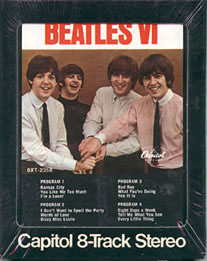 On June 14th, 1965, American record buyers got to hear the new George Harrison composition "You Like Me Too Much" on the Capitol album "Beatles VI." This beat out British record buyers by seven-and-a-half weeks, since the UK album "Help!" wasn't released in that country until August 6th of that year. "Beatles VI" was then released on compact disc on January 21st, 2014, both the mono and stereo versions of the album contained on one CD. On June 14th, 1965, American record buyers got to hear the new George Harrison composition "You Like Me Too Much" on the Capitol album "Beatles VI." This beat out British record buyers by seven-and-a-half weeks, since the UK album "Help!" wasn't released in that country until August 6th of that year. "Beatles VI" was then released on compact disc on January 21st, 2014, both the mono and stereo versions of the album contained on one CD.
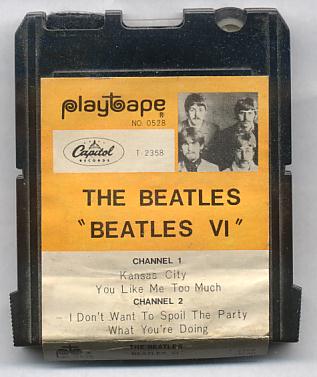 Sometime in 1967, Capitol released Beatles music on a brand new but short-lived format called "Playtapes." These tape cartridges did not have the capability to include entire albums, so two seperate truncated four-song versions of "Beatles VI" were released in this portable format, "You Like Me Too Much" being on one of them. These "Playtapes" are highly collectable today. Sometime in 1967, Capitol released Beatles music on a brand new but short-lived format called "Playtapes." These tape cartridges did not have the capability to include entire albums, so two seperate truncated four-song versions of "Beatles VI" were released in this portable format, "You Like Me Too Much" being on one of them. These "Playtapes" are highly collectable today.
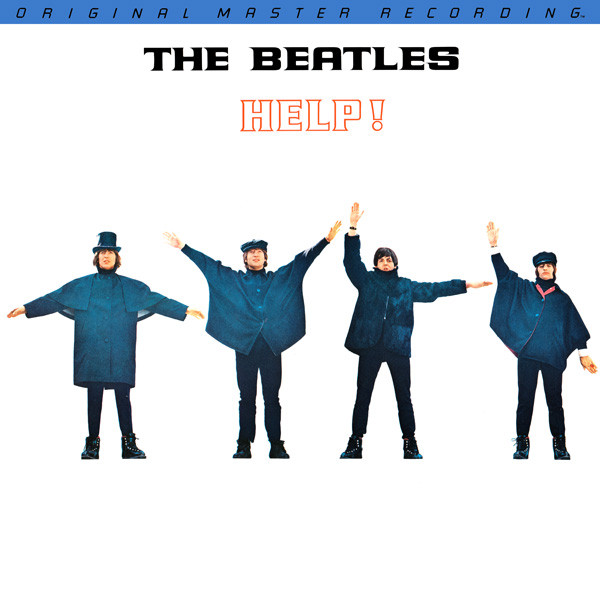 The first time the original British "Help!" album was made available in the US was the "Original Master Recording" vinyl edition released through Mobile Fidelity Sound Lab in January of 1986. This album included "You Like Me Too Much" and was prepared utilizing half-speed mastering technology from the original master tape on loan from EMI. This version of the album was only available for a short time and is quite collectible today. The first time the original British "Help!" album was made available in the US was the "Original Master Recording" vinyl edition released through Mobile Fidelity Sound Lab in January of 1986. This album included "You Like Me Too Much" and was prepared utilizing half-speed mastering technology from the original master tape on loan from EMI. This version of the album was only available for a short time and is quite collectible today.
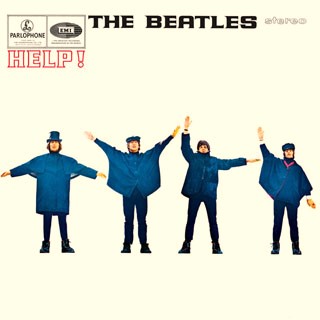 The British "Help!" album did get released in the US on April 30th, 1987 in the compact disc format, a vinyl edition coming out on July 21st, 1987. Unlike the first four British Beatles albums on CD, these releases were in stereo right from the start. The stereo mixes on these releases were re-made by George Martin in 1986 since he didn't approve of the original 1965 mixes. The remastered version of this album (using the same 1986 stereo mixes) was released on CD on September 9th, 2009, the vinyl remastered edition coming out on November 13th, 2012. The British "Help!" album did get released in the US on April 30th, 1987 in the compact disc format, a vinyl edition coming out on July 21st, 1987. Unlike the first four British Beatles albums on CD, these releases were in stereo right from the start. The stereo mixes on these releases were re-made by George Martin in 1986 since he didn't approve of the original 1965 mixes. The remastered version of this album (using the same 1986 stereo mixes) was released on CD on September 9th, 2009, the vinyl remastered edition coming out on November 13th, 2012.
The highly-priced CD box set "Compact Disc EP Collection" was the debut of the mono version of "You Like Me Too Much" on CD. This was released on June 30th, 1992.
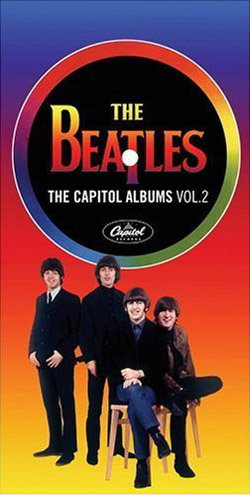 April 11th, 2006 was the release date for the second box set featuring the original Beatles albums on Capitol. "The Capitol Albums, Vol. 2" included the full "Beatles VI" album in both stereo and mono, featuring the original 1965 stereo mix of "You Like Me Too Much" that wasn't available anywhere else on CD. For initial pressings of this set, Capitol mistakenly a "mono type-B" fold-down mix for the entire "Beatles VI" album, which was a method that combined both the left and right channels of the stereo mix to create a mono mix. Therefore, the mono mix of "You Like Me Too Much" in this set was initially prepared in this way, the error being corrected in subsequent pressings. April 11th, 2006 was the release date for the second box set featuring the original Beatles albums on Capitol. "The Capitol Albums, Vol. 2" included the full "Beatles VI" album in both stereo and mono, featuring the original 1965 stereo mix of "You Like Me Too Much" that wasn't available anywhere else on CD. For initial pressings of this set, Capitol mistakenly a "mono type-B" fold-down mix for the entire "Beatles VI" album, which was a method that combined both the left and right channels of the stereo mix to create a mono mix. Therefore, the mono mix of "You Like Me Too Much" in this set was initially prepared in this way, the error being corrected in subsequent pressings.
 The CD box set "The Beatles In Mono" was released on September 9th, 2009, the vinyl edition being released on September 9th, 2014. As a special feature, the British "Help!" album (including "You Like Me Too Much") was included in the original mono and stereo mixes as released in 1965. So if you're an enthusiast who wants to hear the Beatles exactly the way they were heard in the '60s, you might want to plunk down the big bucks to have this 13-disc "limited edition" set while you can still find it. The CD box set "The Beatles In Mono" was released on September 9th, 2009, the vinyl edition being released on September 9th, 2014. As a special feature, the British "Help!" album (including "You Like Me Too Much") was included in the original mono and stereo mixes as released in 1965. So if you're an enthusiast who wants to hear the Beatles exactly the way they were heard in the '60s, you might want to plunk down the big bucks to have this 13-disc "limited edition" set while you can still find it.
Live Performances
 The Beatles never included this song in any live performances throughout their career. It could very well be that they knew how difficult it would be to reproduce the song on stage with the dual piano work of Paul and George Martin. George was happy to keep "Everybody's Trying To Be My Baby" by his hero Carl Perkins as his spotlight song throughout most of their 1965 appearances, it being replaced with his own composition "If I Needed Someone" by December of that year. The Beatles never included this song in any live performances throughout their career. It could very well be that they knew how difficult it would be to reproduce the song on stage with the dual piano work of Paul and George Martin. George was happy to keep "Everybody's Trying To Be My Baby" by his hero Carl Perkins as his spotlight song throughout most of their 1965 appearances, it being replaced with his own composition "If I Needed Someone" by December of that year.
Conclusion
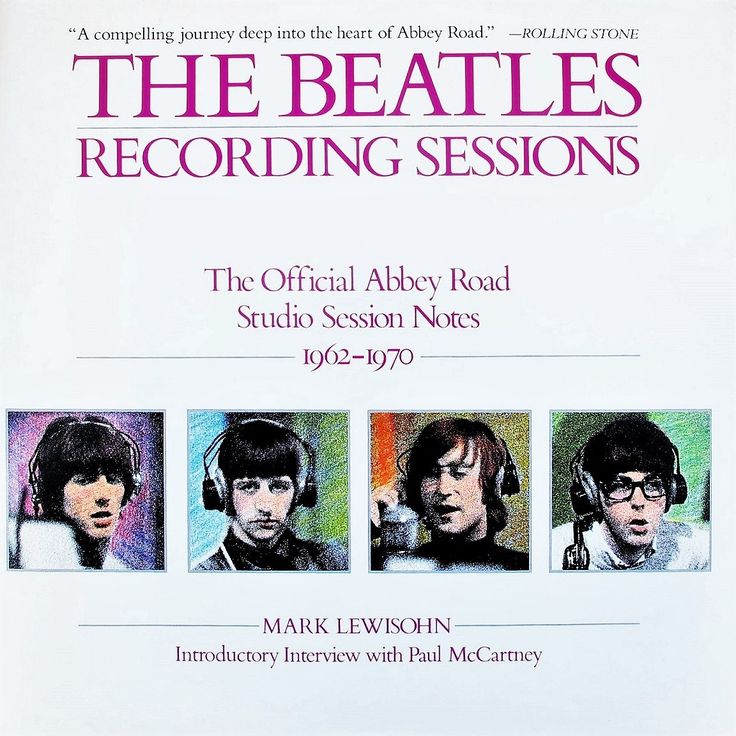 While the song was never popular enough to be included on any compilation album, one shouldn't underestimate the fine craftsmanship that went into "You Like Me Too Much." As author Mark Lewisohn wrote in his book "The Beatles Recording Sessions" regarding both this song and the Lennon / McCartney composition "The Night Before" that was recorded on the same day, this was "pop music of a superior quality with fine melodies, harmonies and instrumentation." Four hours of hard work went into this track at a time when a Beatles song could be knocked out in fifteen minutes. Maybe not good enough for their second movie, but definitely good enough to be savored for decades to come! While the song was never popular enough to be included on any compilation album, one shouldn't underestimate the fine craftsmanship that went into "You Like Me Too Much." As author Mark Lewisohn wrote in his book "The Beatles Recording Sessions" regarding both this song and the Lennon / McCartney composition "The Night Before" that was recorded on the same day, this was "pop music of a superior quality with fine melodies, harmonies and instrumentation." Four hours of hard work went into this track at a time when a Beatles song could be knocked out in fifteen minutes. Maybe not good enough for their second movie, but definitely good enough to be savored for decades to come!
Song Summary
"You Like Me Too Much"
Written by: George Harrison
Instrumentation (most likely):
- George Harrison - Lead Vocals, Rhythm Guitar (1964 Gibson J-160E), Lead Guitar (1963 Gretsch 6119 Tennessean)
- John Lennon - Electric Piano (1964 Hohner Pianet C), tambourine, backing vocals
- Paul McCartney - Bass Guitar (1963 Hofner 500/1), Piano (Hamburg Steinway Baby Grand), backing vocals
- Ringo Starr - Drums (1964 Ludwig Super Classic Black Oyster Pearl)
- George Martin - Piano (Hamburg Steinway Baby Grand)
Written and compiled by Dave Rybaczewski
|
IF YOU WOULD LIKE TO MAKE A DONATION TO KEEP THIS WEBSITE UP AND RUNNING, PLEASE CLICK BELOW!
|